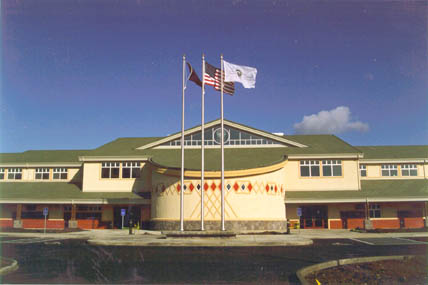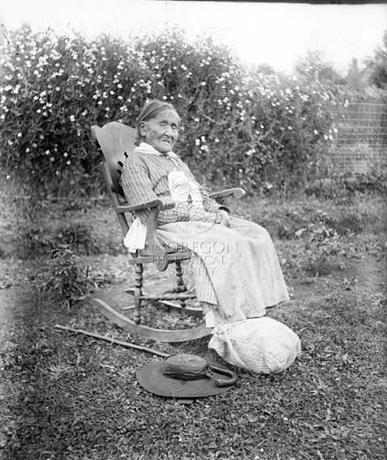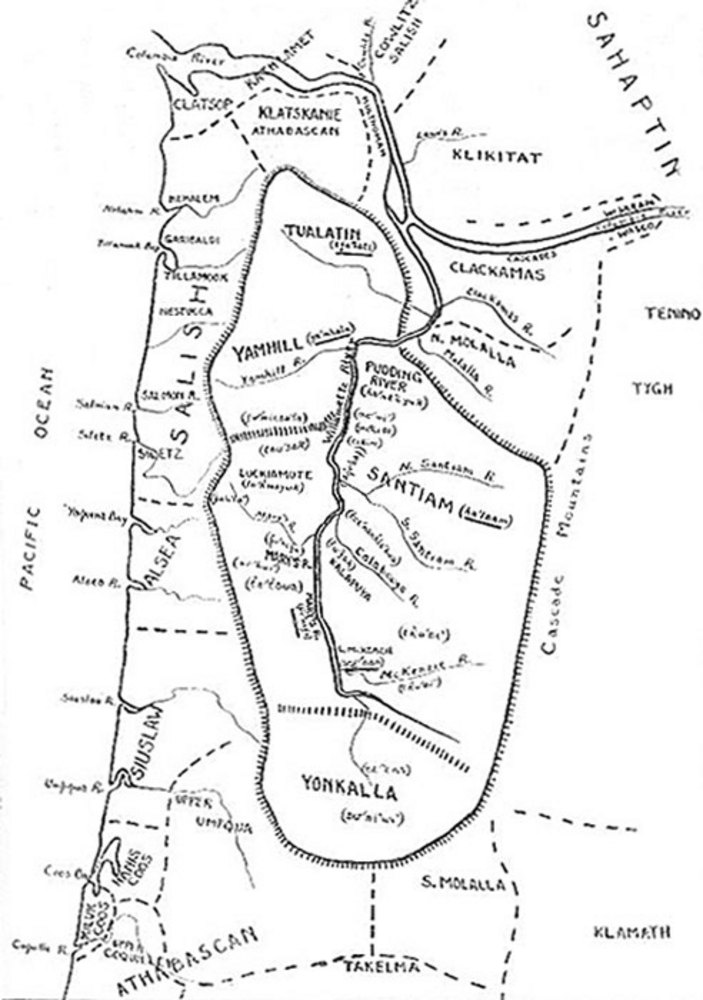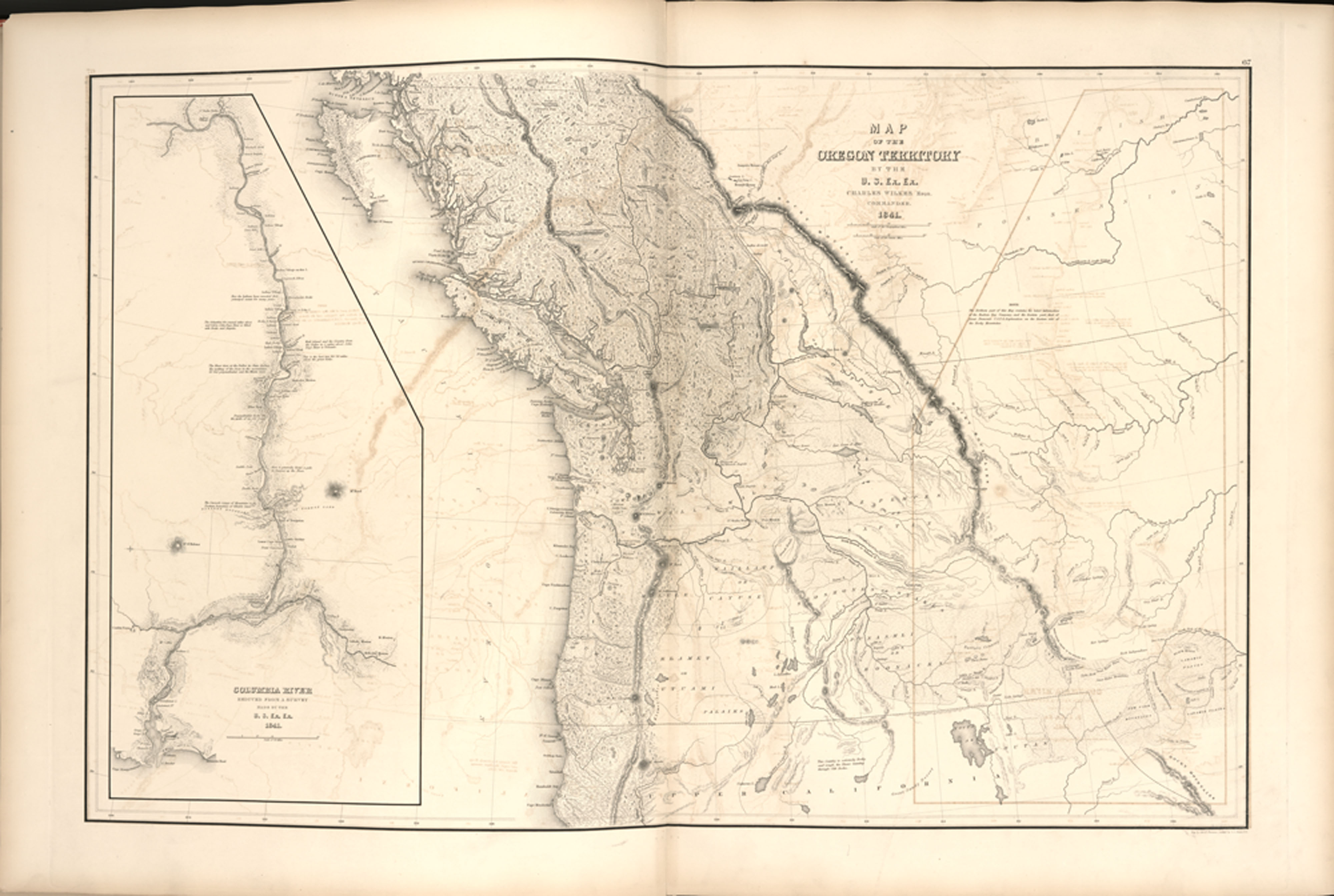Costume of a Callapuya Indian, also known as Kalapuya Man, is one of the earliest, most recognizable images in Oregon history. The 1841 woodcut by Alfred T. Agate is the only surviving full-body drawing of a Kalapuya person from that period and for several decades after. It has become the symbol of the Kalapuyans and is the drawing most used to represent any Kalapuya person from the nineteenth century.
The drawing was first published in 1845 in volume five of Narrative of the United States Exploring Expedition, by Charles Wilkes. It became popular after Harold Mackey included the drawing in The Kalapuyans, published in 1974. There are two other less-known drawings of Kalapuya people from Agate, A Kalapuya Lad and A Kalapuya Man, engraved by William Dougal. The head-and-shoulder color portraits of two Yoncalla Kalapuyans were drawn when the expedition spent a few days at Fort Umpqua.
Agate was a member of the Wilkes Expedition, which traveled into the Willamette Valley in 1841 as part of their survey of the West Coast. On August 13 or 14, the members of the expedition were camped a day’s travel south of the Willamette River, in the Chelamela Kalapuya territory south of the Long Tom River, when they encountered the Kalapuya man who is the subject of the Costume of a Callapuya Indian. He was traveling with several companions, including women.
According to the expedition narrative, “Some wandering Callapuyas came into camp […]: they were very poorly provided with necessities. Mr. Agate took a characteristic drawing of one of the old men.” Wilkes’s account states that the land around them had been burned for the previous four days, which may account for their lack of “necessities,” probably a reference to food. The fires, set by the Kalapuya to control vegetation, would have frightened animals away for a time. It might also be the case that the Kalapuya did not travel with much food because they knew they would find enough to eat along the way.
Much of the clothing of Kalapuya men and women was made from deer hides with skin head coverings. In the drawing, the man wears European-styled footwear, indicating American and European goods had been traded in the region, primarily through the Hudson’s Bay Company. George W. Colvocoresses, the expedition midshipman, suggested that the Kalapuya men were wearing “cast off clothing of whites,” and Lt. Henry Eld wrote that they were wearing the “remnants of company clothing,” a reference to the Hudson’s Bay Company. The man’s other articles are of native origin, including his sealskin quiver, which is likely the result of trade with coastal or Columbia River tribes.
Indigenous trade economies were changed forever by fur trading in the Pacific Northwest region. Hudson’s Bay Company, a British corporation, was the most dominant in the Oregon Territory and controlled trade with many tribes from 1824 to 1850 from Fort Vancouver. The company set up trading posts in the region and sent fur-trading expeditions into tribal areas to trade for furs of many animals in exchange for American and European goods such as clothing, beads, rifles, and metal. The tribes became dependent on this trade, and many of their economies were centered on it.
By the 1840s, few Kalapuyans remained in the region. Where their population at one time was an estimated 25,000 people, perhaps a few thousand remained by the time of the Wilkes Expedition. By the time the tribes were removed to reservations in the 1850s, an estimated 97 percent of the Kalapuya had died, principally from epidemics of European-introduced diseases like malaria, influenza, and smallpox. The Kalapuya man may have been one of the older surviving Kalapuyans in the valley.
In 1855, the tribes of the Willamette Valley signed the Kalapuya Etc. treaty, which ceded their lands to the United States. The next year, all of the Kalapuya tribes of the Willamette and Umpqua valleys were removed to the Grand Ronde Indian Reservation, where most of their descendants are members today.
-
!["Costume of a Callapuya Indian," 1841, by Alfred T. Agate]()
"Costume of a Callapuya Indian," 1841, by Alfred T. Agate.
"Costume of a Callapuya Indian," 1841, by Alfred T. Agate Courtesy Oreg. Hist. Soc. Research Lib., OrHi 104921
Related Entries
-
![Confederated Tribes of Grand Ronde]()
Confederated Tribes of Grand Ronde
The Confederated Tribes of Grand Ronde Community of Oregon is a confede…
-
![Kalapuyan peoples]()
Kalapuyan peoples
The name Kalapuya (kǎlə poo´ yu), also appearing in the modern geograph…
-
![Kalapuya Treaty of 1855]()
Kalapuya Treaty of 1855
The treaty with the Confederated Bands of Kalapuya (1855) is the only r…
-
![United States Exploring Expedition (1838-1842)]()
United States Exploring Expedition (1838-1842)
The United States Exploring Expedition (1838-1842), also known as the W…
Related Historical Records
Map This on the Oregon History WayFinder
The Oregon History Wayfinder is an interactive map that identifies significant places, people, and events in Oregon history.
Further Reading
Pickering, Charles, and John Charles Hall. The Races of Man: and their geographical distribution. Boston, Mass.: H.G. Bonn Publisher, 1850.
Colvocoresses, George. Four Years in a Government Exploring Expedition. Bedford, Mass.: Applewood Books, 1852.
Wilkes, Charles. Narrative of the United States Exploring Expedition, during the years 1838, 1839, 1840, 1841, 1842. Philadelphia, 1849.





